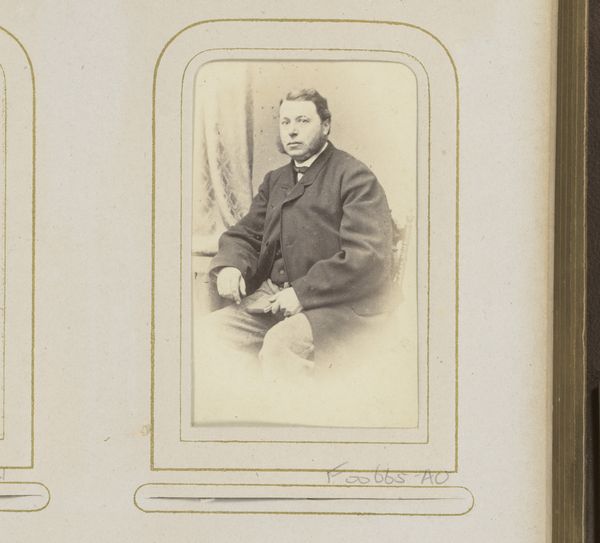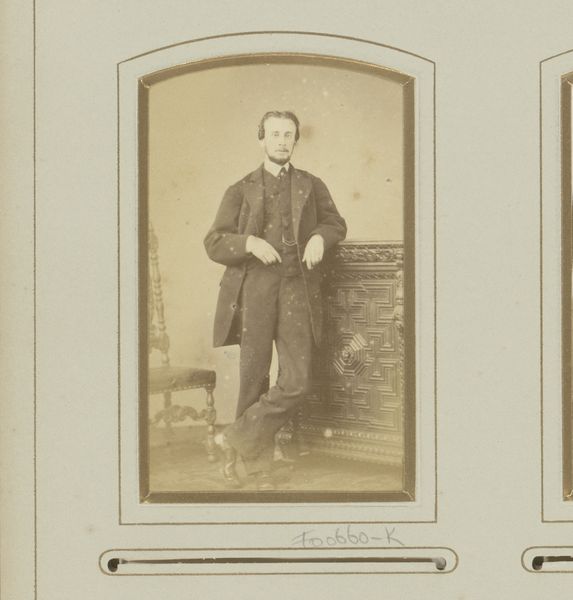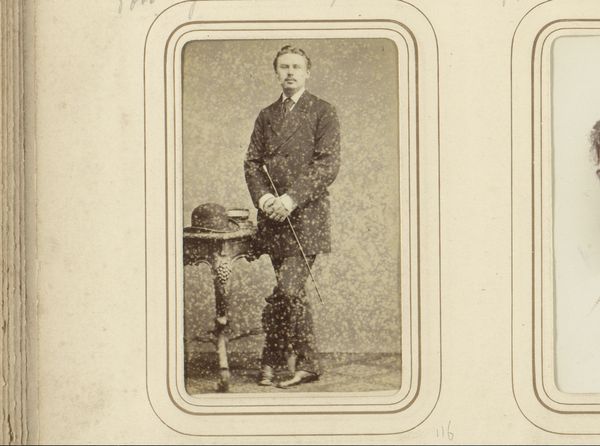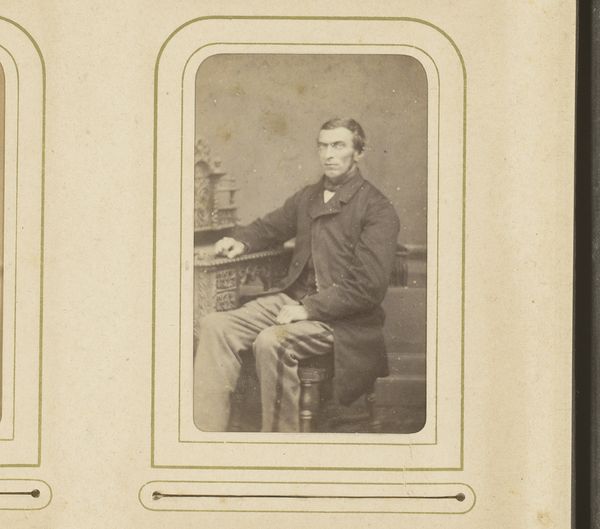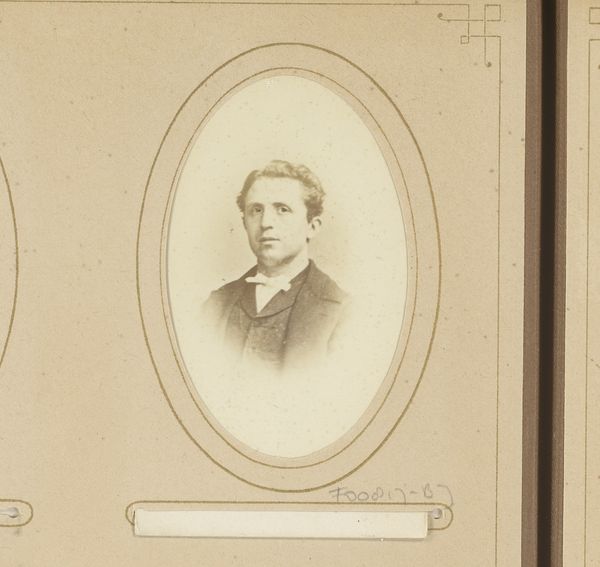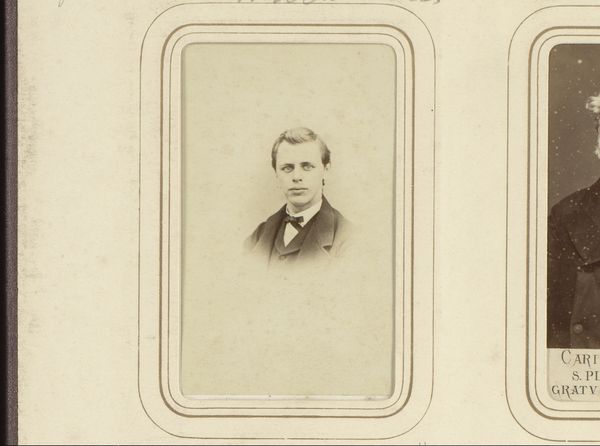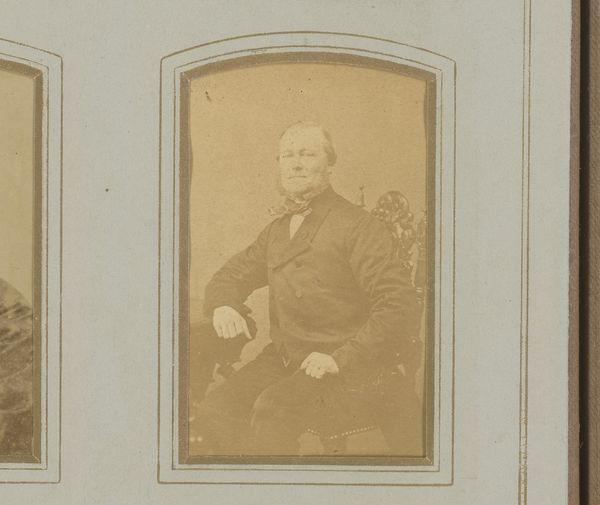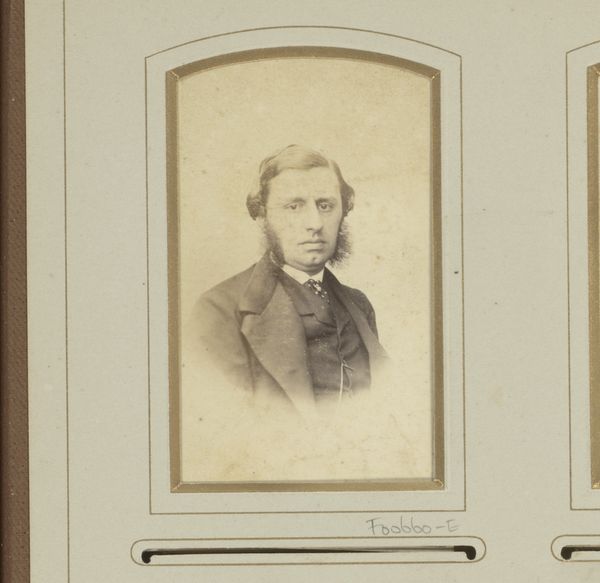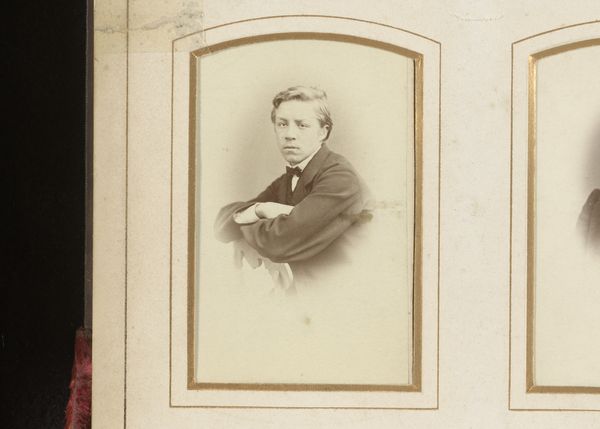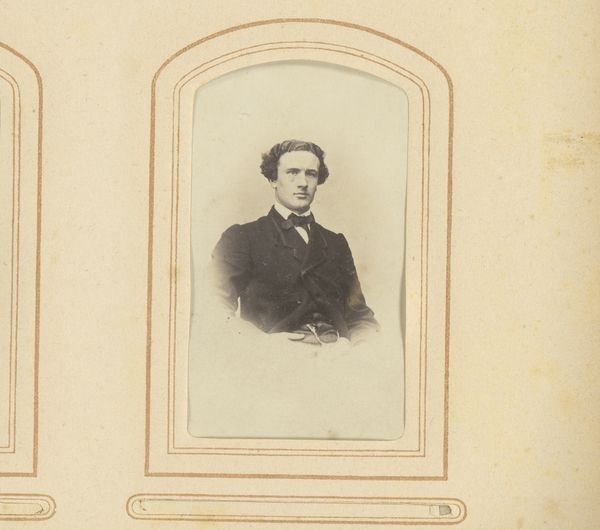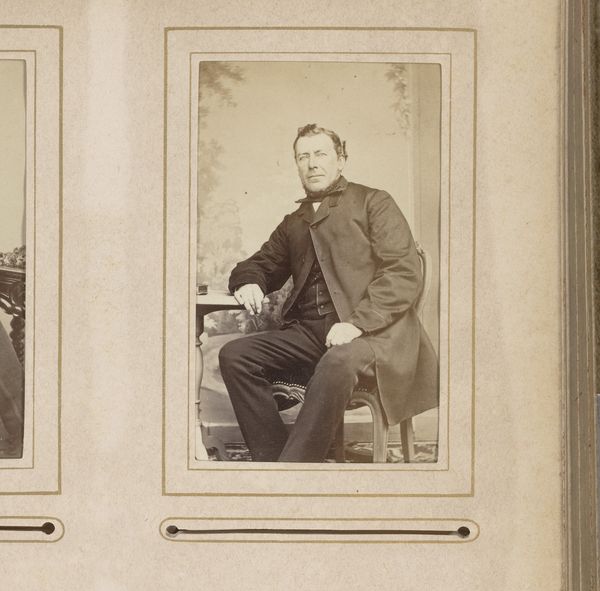
photography
#
portrait
#
photography
#
historical photography
#
19th century
#
academic-art
Dimensions: height 84 mm, width 51 mm
Copyright: Rijks Museum: Open Domain
Curator: Ah, yes, here we have a fascinating portrait. This is "Portret van Frederik Karel Antonius Pantekoek" created sometime between 1850 and 1878 by S. Carspel. The piece uses early photographic methods. Editor: The first thing that strikes me is how staged everything appears. A very controlled stillness permeates the whole scene—rigid composure but then again he also seems at ease, perched gently on his seat, relaxed gaze, almost as if frozen in time. Curator: Photography at this stage wasn't instantaneous like our digital cameras, no? One wonders about the laborious, almost artisanal processes involved back then, and how the technology shapes both the image and the social ritual of portraiture. I suspect that early cameras involved carefully made, complex machines and materials that make modern photography look so, so lazy by comparison! Editor: It does raise some questions about labor. Consider the sourcing of materials like silver or mercury—both essential for early photography—from mines, potentially exploiting colonial labor? Even the manufacture of glass for the photographic plates speaks to a complex system. Curator: It is compelling to think of photography as more than capturing a likeness, isn’t it? I am now trying to imagine the subject, Pantekoek himself; the duration of each pose, his thoughts, what clothes he chose that day, how long he prepared that perfectly balanced posture. He feels both utterly present and achingly absent. Editor: Yes, absolutely. But, even that carefulness hides layers of other less immediately visible materials that facilitated the representation that is available for us to perceive. Thinking about the historical reception too is worthwhile. How would someone consuming this photograph in the 19th century respond, what values or class assumptions underpinned the relationship between sitter, photographer and patron? It is an early commodification of an artistic process... I think! Curator: You know, I agree wholeheartedly. Gazing at this image, I initially saw it simply as a window to the past, to the life of one man and perhaps a comment about art in this era. However, your materialist lens forces a reckoning with the entire world that enabled and surrounded it and for that I am thankful. Editor: It seems like we both extracted valuable new perspectives that enrich how we appreciate the past using the photograph.
Comments
No comments
Be the first to comment and join the conversation on the ultimate creative platform.
